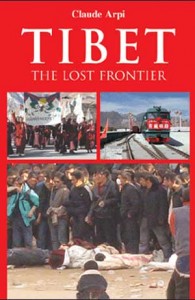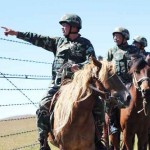The answer from the Secretary of State for India came on February 27, 1903. Although it was decided to follow a forward policy towards Tibet, London was still very cautious about the plans of Lord Curzon:
“…His Majesty’s Government cannot regard the question as one concerning India and Tibet alone. The position of China, in its relations to the powers of Europe has been so modified in recent years that it is necessary to take into account these altered conditions in deciding on action affecting what must still be regarded as a province of China.”
| Editor’s Pick |
London was very prudent about the reaction to the larger issues raised by the armed mission to Tibet. It had “accordingly come to the conclusion that it would be premature to adopt measures so likely to precipitate a crisis in the affairs of Tibet as those which your Excellency has proposed”.23
London was also of the opinion that the Russians should be requested to make a public statement of their foreign policy regarding Tibet and China and they should be warned of the British Government’s “intention to meet any action on their part by more than counter-balancing measures of our own.”
However, the Russians remained non-committal over their Tibet policy and a year later Lord Curzon would have his way and be able to implement his forward policy.
 To summarize Curzon’s arguments: first, the Manchus were weak and their suzerainty was merely a ‘constitutional fiction’; second, nothing was to be allowed to ‘threaten’ the smooth functioning of the British empire; third, the British should use, when necessary, the strength of the Nepalese army; fourth, Tibet needed to be brought under the British ambit to nip the Russian influence in the bud, while no political motive should be ‘shown’ in taking Tibet under British influence.
To summarize Curzon’s arguments: first, the Manchus were weak and their suzerainty was merely a ‘constitutional fiction’; second, nothing was to be allowed to ‘threaten’ the smooth functioning of the British empire; third, the British should use, when necessary, the strength of the Nepalese army; fourth, Tibet needed to be brought under the British ambit to nip the Russian influence in the bud, while no political motive should be ‘shown’ in taking Tibet under British influence.
This was the outline of the mission that Younghusband was to take to Tibet the following year.
Notes
- Younghusband, Sir Francis, India and Tibet, (London: John Murray, 1910), p. 11.
- Cooch Behar, in the modern state of West Bengal.
- At that time the Panchen Lama was known as the Tashi Lama or Lama of the Tashilhunpo. He was usually referred by the Tibetans as the Panchen Rinpoche.
- The discussions were in Hindi. The Panchen Lama was quite fluent in the language.
- Younghusband, op. cit., p. 19.
- Fourteen years later, the Gurkhas would invade Tibet.
- Younghusband, op. cit., p. 22.
- The pass between Sikkim and Tibet.
- The National Assembly.
- Against the fortifications which were, according to them, on their territory.
- We could even say till today.
- Kuleshov, Nikolai S. Russia’s Tibet File (Dharamsal, Library of Tibetan Works & Archives, 1996), p. 3.
- The Indian Pundits were sent by the Government of British India to survey unknown Himalayan areas including Tibet and to gather intelligence reports. Most of the time the British chose natives from the border regions and gave them training near Dehra Dun.
- Even today, Buryata is a Republic of the Russian Federation. Most of the population is Buddhist and owe allegiance to the Dalai Lama who has visited the Republic several times.
- ‘Foreign Policy’ is a big word, because nothing such as a declared ‘foreign policy’ existed.
- One of the bases of this Choe-yon relationship would have been the patronage given by the Tsar to the Buddhist population of Buryata and Kalmyk.
- Tsentsab or debating partner.
- British Parliamentary Papers, op. cit., p. 111.
- Landon Percival, The Opening of Tibet (London: 1905), p. 22.
- Prof. Edwin Maxey, Tibet, Russia and England on the International Chess Board, (Boston: The Arena, 1904) p. 28-31.
- Text of Lord Curzon’s letter in Taraknath Das, Dr, British Expansion in Tibet (The Modern Review: April 1926), p. 438; also in British Parliamentary Papers on Tibet (1855-1914), p. 187.
- The idea will be used again by Sir Henry McMahon in 1913 for the Simla Convention.
- Taraknath Das, op. cit., p. 439.




